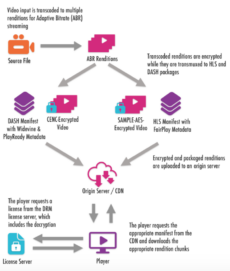3 Things You Need to Know Before You Host a Virtual Event
CMMA BlogHow can you connect and engage with customers and prospects when the trade show floors are closed? Virtual events are the year’s marketing buzzwords – businesses are scrambling to create engaging virtual experiences for their audiences at home that stand out. But how do you pull one off successfully and quickly, while making for an experience that is impossible to forget?
Building a virtual event that excites and impacts your audiences isn’t as hard as it looks. With the right tools and the right technical partner to help guide you, you can make a transformative, engaging experience seem like a piece of cake.
However, there are a few things you need to know before you get started that will help make your next virtual event a huge success.
Figure out what it is you want to accomplish first – everything else should come later.
This may sound obvious; but, establishing realistic goals for your virtual event is paramount to ensuring there’s a meaning behind everything you do, from whom you choose to invite to how you manage revenue and sponsorship opportunities. What are you trying to accomplish? Is this event a brand booster, or will your sales team use it to nurture some of their most qualified leads? Having clear goals for your virtual event will help you create and design the content and a matching virtual experience that best suits your audience.
Consider the big picture and commit to active engagement.
It’s not only about the day your attendees log on and watch live panels or keynote sessions; it’s also about everything leading up to it and everything that follows when it’s all said and done. It’s about curating active engagement through email invitations, social posts, customer calls, press releases, etc.
Your audiences are no longer walking in and out of sessions. They’re miles away from you on the other side of a screen, looking for an experience that’s just as engaging as it would be if they were there in person. Which means your focus needs to be at the user level. From the moment they click “register now” to when you send a reminder email the day before the event, how you engage your attendees will determine the excitement they feel going in.
Also, consider how you want to engage with each attendee. Do you want chat and moderated Q&A for live sessions? Do you want interactive elements built into the video-on-demand sessions? Consider how this should all look and feel and then execute on it.
For example:
-
Determine key themes for your event. What sort of topics will your sessions be covering? Why will your event matter to people in your industry? Once you’ve answered these questions, you’ll find a common message or messages that’ll help drive the theme of your event.
-
Set a timeline of event marketing deliverables to determine how and how often you will reach out to customers, prospects, and partners before, during, and after your event.
-
Start using those themes to draft creative content that will capture your audience’s attention and keep them thoroughly engaged until your event goes live and long after it’s over.
“Give us the tools, and we will finish the job” – Winston Churchill.
How people view your content is as important as the content you’re providing. Ensure you have the right tools to reach your audiences, such as a robust online video partner that encompasses a variety of video needs, especially when trying to reach thousands of viewers at once. With the right platform, you’ll stream high-quality video in real-time and provide on-demand assets that your audience can watch. You’ll also be able to customize the user interface to fit your brand, gain valuable data into how your viewers are watching your content, and so much more.
To help you get a deeper understanding of how you can optimize your next virtual event experience, Brightcove and Adobe have created an eBook to help you Launch Virtual Events That Stand Out, Scale Up, and Soar . It covers everything you need to know to create a world-class virtual event that will deliver results.


